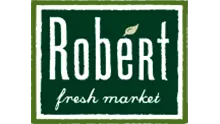Old Tulane Stadium History
Old Tulane Stadium
Tulane Stadium was the home to Tulane Football from 1926 until 1974. Built on an old plantation where sugar was first granulated, the original construction cost approximately $300,000 and was made mostly from brick and concrete. As the site of the annual Sugar Bowl, Tulane Stadium was often informally referred to as "Sugar Bowl Stadium." After its expansion in the 1940's, Tulane Stadium became the largest football stadium in the south.
1926
Stadium was opened with a seating capacity of 35,000.
1935
The first Sugar Bowl game was played in Tulane Stadium where the Tulane Green Wave took on the Temple Owls.
1947
Tulane Stadium was expanded to seat up to 81,000 fans.
1957
Lights were installed.
1967
Tulane Stadium became home to the NFL's New Orleans Saints from their first game on September 17, 1967 until December 8, 1974.
1973
Record number of 86,598 fans witnessed Tulane defeat LSU, 14-0. It was the last LSU-Tulane rivalry game played on Tulane's campus.
1974
Tulane's final game on campus was played November 30, 1974 vs. Ole Miss. The final collegiate game played in Tulane Stadium was the Sugar Bowl and was played one month later on New Year's Eve where Nebraska defeated Florida.
1975
The Louisiana Superdome (now known as the Mercedes-Benz Superdome) opened and on that day, Tulane Stadium was condemned. Upon appeal by Tulane University, the original brick and concrete section was deemed fit to use but not the expanded metal seating section. The facility was used for football practice, high-school games and other smaller events.
1979
The final game was played in the stadium by De La Salle High School and Archbishop Rummel High School on November 1, 1979. On November 2, Tulane President Sheldon Hackney announced the stadium would be demolished.
1980
The demolition of Tulane Stadium was complete.
Super Bowls
Super Bowls IV, VI and IX were played in Tulane Stadium. Super Bowl IX was the final professional game played in the stadium. Present
The original site of Tulane Stadium is now home to the Aron and Willow student housing complex, the Diboll parking structure, the Reily Student Recreation Center, Brown Quad and the Westfeldt Practice Facility.









